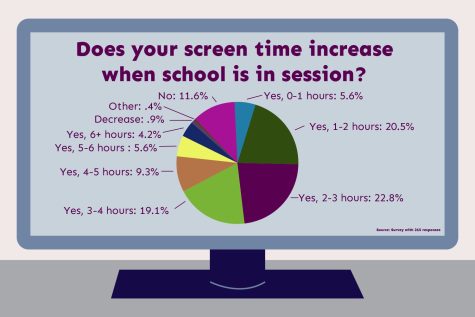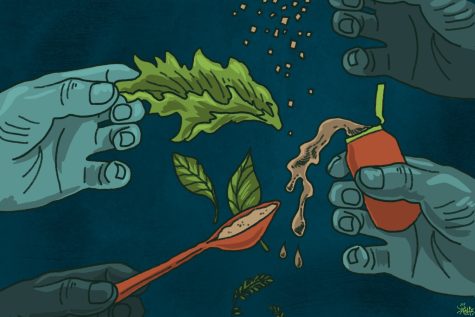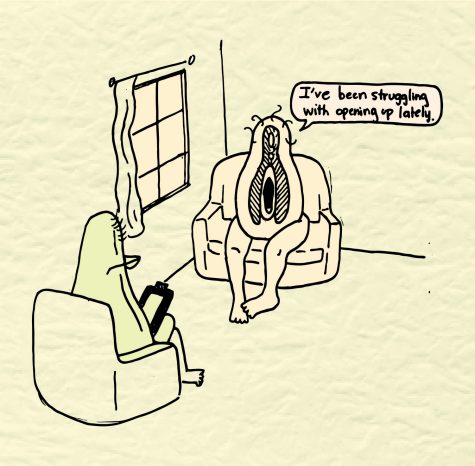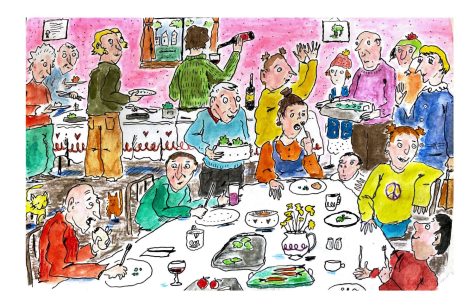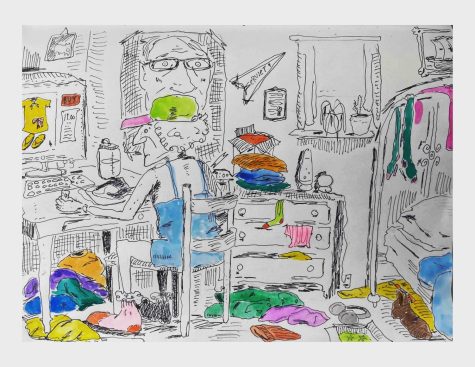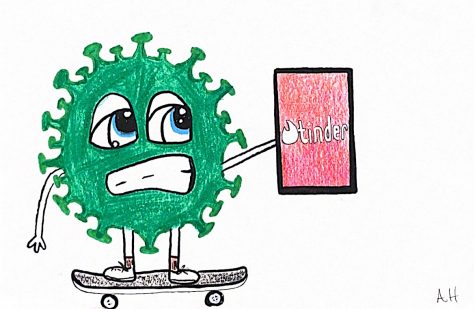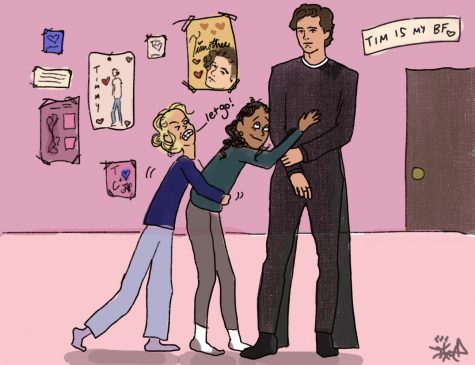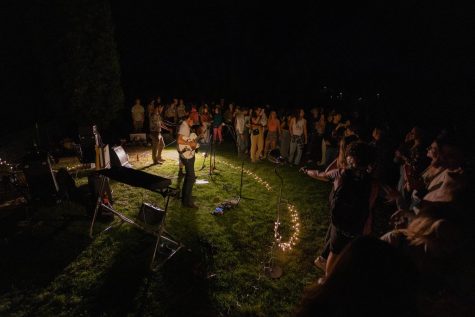Notes on coolness
February 19, 2021

How does one define the essence of cool? Being a member of a subversive art scene? Mastering a balanced strike between hot and cold — of promiscuity and aloofness? Following certain trends? Or turning your nose up at them?
Coolness is ever present, morphing and seeping through the cracks of the Western zeitgeist. It’s in our music, what we watch and the way we dress. It permeates into the ways we talk and argue. It can even inspire bias, and of course, exclusion.
Cool is a psyche, an attitude, and a worldview. It is perhaps one of the most important and influential phenomena in the world.
It is intangible and difficult to trace; a simple, yet overwhelming feeling that determines the way we perceive ourselves and our environments.
One aspect of cool that can be universally agreed upon is that cool often emerges from an “underground;” groups and movements pursuing alternative and artistic lifestyles.
Broken down, this underground has always been populated by subcultures: micro-factions of people with variant views on the culture at large.
Since their conception, the consumption of subcultures has driven fashion, music and culture as a whole, defining entire generations and even sparking political uprising.
The tone and pace of coolness has always been set by this class.
With its roots in avant-garde Black subculture, coolness was born in the American underground in the late 19th century.
Amongst dozens of blues and jazz artists active in this period, saxophonist Lester Young invented “hipness,” and trumpeter Miles Davis, “The Prince of Darkness,” coined the term on the “Birth of Cool” record.
Fifty years later, coolness still belonged to jazz and blues and the working class and people of color specifically. It found a particular niche in Harlem, New York. This era is known as the Harlem Renaissance.
Dance hall goers started wearing zoot-suits: high-waisted, baggy sets that gave flair to their movements. They wore long jackets with wide lapels, low-hanging pocket chains and fedoras.
In the ‘40s, zoot-suiters were criminalized and accused of hoarding an excessive and unpatriotic amount of fabric during wartime. It spawned riots, and Navy officers marched through the streets of Los Angeles swinging clubs at mostly Mexican-American teens sporting zoot-suits.
In the second half of the twentieth century, the psychedelic aesthetics of the hippie movement and the “Sergeant Pepper” model of rock and roll took hold of cool, pulling the pin from the counterculture grenade and sending its debris all over the country.
Think of “Mad Men’s” Don Draper, lighting a cigarette and craning his neck backward while listening to the Beatles’ “Tomorrow Never Knows,” desperately trying to figure out how to turn it into a commercial concept.
Next of course, was the apocalyptic punk movements of the ‘70s and ‘80s that embraced a DIY ethic and produced hard edged, anti-establishment music. As the Clash put it in “1977,”
“No Elvis, Beatles or the Rolling Stones in 1977.”
Then came Brooklyn. The new wave of alternative pop and rock music was brewing in Bucshwick’s abandoned warehouses in the aftershocks of 9/11.
It produced an ecstasy club scene and a new breed of rock-stars previously thought to be extinct from the likes of the Yeah Yeah Yeahs, LCD Soundsystem, the Strokes and Interpol.
But what now? I look around and I see no zoot-suiters, no hippies, no punks and no hipsters. Where has the underground gone, and who is deciding what is cool?
The longevity once crucial to the music and fashion scenes have vanished before us. Trends do not require a real cultural commitment to participate in, let alone be given the opportunity to form an identity within one that could pervade a subculture.
For example, the e-boy and girl trends of the last year incorporated a lot of goth imagery: dark eye makeup, stubby painted nails, belt chains and plaid.
But the goth scene that reached its peak in the ‘90s was more than the performance of it, it was a way of seeing and being seen, as well as a shared influential experience.
Goth was an artistic concept and a communal experience defined by dark, self-designed clothes, an affinity for the obscure and occult, and love for bands like Bauhaus or Siouxsie and the Banshees that flourished in the goth club scene.
Goth was a subculture!
Modernly, it takes no cultural investment to embrace cool, one need only hashtag “AltTiktok.”
Where is the passion, identity or community in that? Where is there vigor in it?
If this is what cool has transformed into, where is the power that it promises? The power that made zoot-suiters riot and punks punch cops and goths embrace sexual deviancy.
In 2009, music historian Ted Goia wrote “The Birth (and Death) of the Cool.”
He lays cool to rest at the feet of corporate exploitation: commodified and unauthenticated, cool is simply a market strategy, i.e. all the Nirvana and Grateful Dead tees at Target.
I disagree. Corporate vultures have always tried to pander to poseurs, scavenging in the remains of alternative imagery and mass producing it. “Selling out” is hardly a novel concept in the 2020s.
What has changed is that the hamster wheel of cultural consumption cycles is spinning faster than ever before, largely due to the contemporary, hyper-personalized Internet experience that Generation Z was raised on.
As a result, Gen Zers are largely not interested in being just one thing. We live in an era of sampling and shuffling and singles. Young people are interested in hyperindividualism, maximalism and distinct personal brands.
Even Charli D’aMelio had a little “alt” phase this fall, sporting dyed bangs and dark layered clothing in a few videos before she returned to her All-American aesthetic shortly thereafter.
Additionally, embracing these influences is now a solitary activity as it eliminates something formerly essential to the structure of a subculture: geographic linkage to others in the scene.
Without it, there is no physical manifestation that instigates a sense of sodality or community. The recent culture shift to social distancing is nursing this decline faster than an algorithm could dream of.
Note that I am not hating here. I am subject to these charges, and admit that I’m guilty.
I am a rock girl through and through, but I love to dress like Cher Horowitz. My influences are too broad for them to manifest wholly or clearly in my identity, and I enjoy picking and choosing which parts of myself I showcase day-to-day.
My style doesn’t reflect my taste in music and my taste in music doesn’t always reflect my worldview or life experience. But it is all me, and there is a certain beauty in that. I’d even go as far to call it a generational revolution in self-image and expression.
So, there’s certainly no crime in mixing and matching and pulling from different eras, but at what cost does it come?
Subcultures have become fluid, homogenized and fleeting. Consumption cycles and market strategy as well as a chasm in generational values has pierced cool’s Achilles heel: it killed the tradition of communal, subversive experiences and with it has gone an immeasurably effective tool for cultural and political change.
However, it has given the young new tools for self-expression. If the power of individuality can ever be as motivating as the power of kinship, we have yet to see.
All that’s left to do is wait, and let the cool reinvent itself again.








